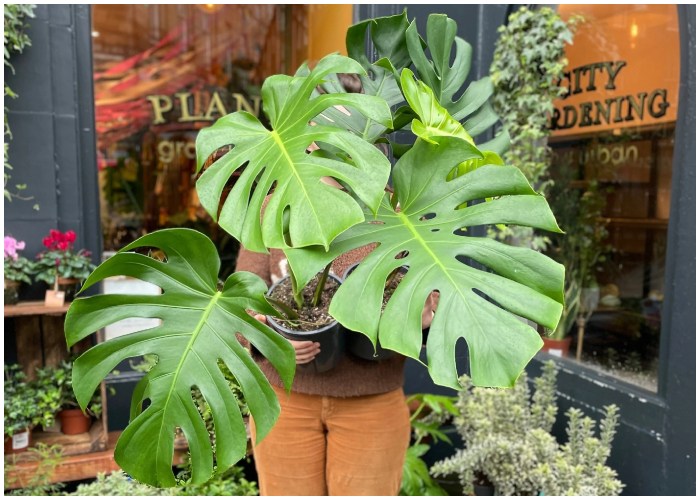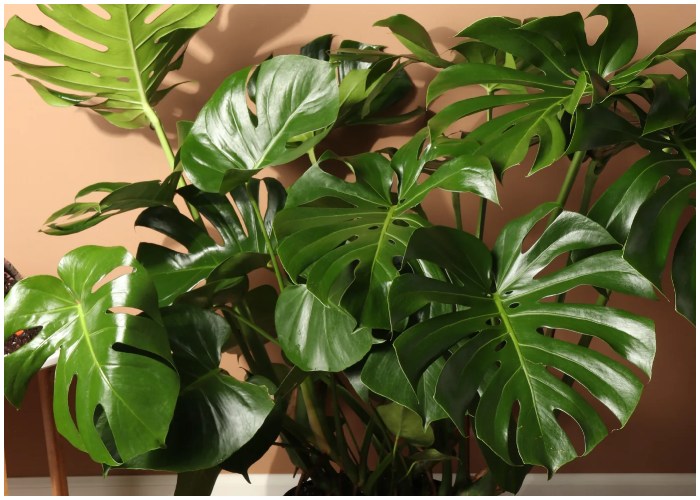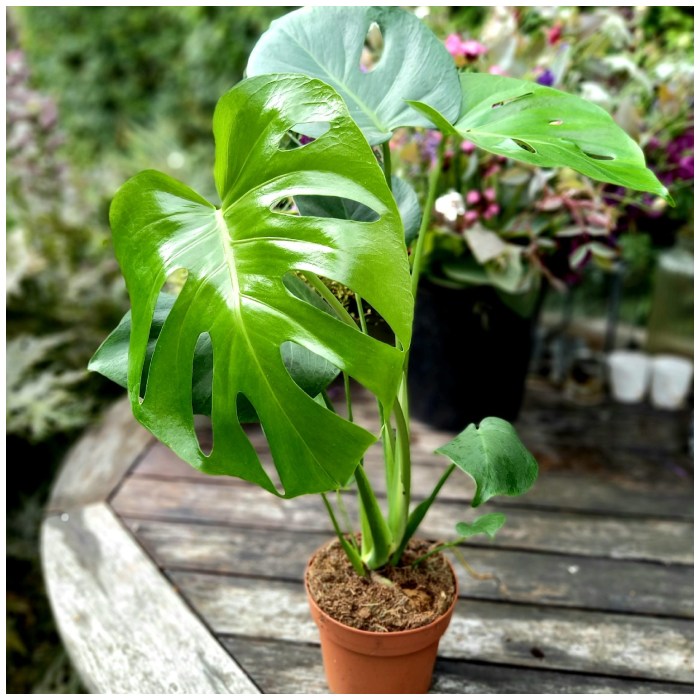Monstera Deliciosa, commonly known as the Swiss Cheese Plant, has captured the hearts of plant enthusiasts around the world. With its striking, glossy leaves and ability to thrive in various environments, it’s no wonder this tropical plant is a favorite for both homes and offices. Its unique aesthetic appeal, combined with low-maintenance requirements, makes it a perfect choice for anyone looking to add a touch of greenery to their space. However, before you bring one of these beauties home, it’s essential to understand its origins, care needs, and potential challenges to ensure it flourishes in your environment.

Origins and Natural Habitat
The Monstera Deliciosa originates from the tropical rainforests of Southern Mexico, extending down to Panama. This plant, also known as the Split Leaf Philodendron, thrives in warm, humid environments where it uses trees as natural supports to grow upwards. In some regions, like Hawaii, it has become an invasive species due to its robust growth and adaptability. Understanding its natural habitat is crucial for mimicking these conditions in your home, ensuring your Monstera remains healthy and vibrant.
Monstera Deliciosa is an epiphyte, meaning it grows on other plants and derives nutrients from the air and debris around it rather than from soil alone. Its name, “Monstera,” refers to its massive leaves, which can reach up to 90 cm in length and 75 cm in width in the wild. When grown indoors, these plants typically reach a height of 60-80 cm, making them a standout feature in any room. The distinctive slits and holes in the leaves, which develop as the plant matures, are not just for show; they help the plant withstand heavy rainfall and strong winds in its native rainforest environment.
Pots and Soil:
Choosing the right pot and soil is essential for your Monstera’s growth. Opt for a large pot with good drainage to prevent water from pooling at the roots, which can lead to rot. Peat moss-based soil mixed with sand is ideal, as it replicates the plant’s natural environment by providing a well-draining yet moisture-retentive medium. As your Monstera grows, re-potting every one to two years is necessary, increasing the pot size each time. If your plant reaches a size you’re comfortable with, refreshing the topsoil annually will suffice.
Atmosphere and Environment:
The Monstera Deliciosa thrives in temperatures between 18-27°C with moderate to high humidity levels. While it enjoys bright light, direct sunlight can scorch its leaves, so place it in a spot with plenty of indirect light. If your room has a lot of natural light, consider rotating the plant weekly to encourage even growth. For those in drier climates or during winter months when indoor heating can dry out the air, misting the leaves regularly helps maintain the necessary humidity.

Watering and Fertilization:
During the summer months, water your Monstera when the top 2-5 cm of soil is dry, as this is when the plant is actively growing. In winter, reduce watering, allowing the top 7-12 cm of soil to dry out before rewatering. Always ensure the soil is thoroughly saturated, and excess water is drained away. Over-watering can lead to root rot, so it’s crucial to monitor moisture levels. Additionally, feeding your Monstera with a water-soluble fertilizer every two weeks during the growing season will keep it nourished and healthy.
Trimming and Replanting:
Monstera Deliciosa can grow quite large, so regular trimming is necessary to keep it manageable. Every three years, consider pruning the plant by making cuts just above the aerial roots. This not only controls the size but also encourages healthier growth. The cuttings can be replanted to propagate new Monsteras, allowing you to expand your indoor jungle or share plants with friends and family.
Addressing Yellowing Leaves and Brown Tips:
Yellow leaves are a common sign of over-watering, while brown edges or tips usually indicate low humidity levels. Adjusting your watering schedule and increasing humidity through misting can alleviate these issues. If new leaves fail to develop the characteristic slits and holes, it could be due to insufficient light or nutrients, so consider repositioning the plant or adjusting your fertilization routine.

Pet Safety Concerns:
While the Monstera Deliciosa is a stunning addition to any home, it’s important to note that it is toxic to pets. The plant contains a substance that can cause digestive issues and irritation in dogs and cats if ingested. Pet owners should place the plant out of reach of curious animals or opt for pet-safe alternatives.
Bringing a Monstera Deliciosa Home
The Monstera Deliciosa is more than just a plant; it’s a statement piece that adds life and vibrancy to any space. Its low-maintenance nature makes it an ideal choice for both novice and experienced plant parents. By understanding its care requirements and being mindful of its needs, you can enjoy the beauty of this tropical plant for years to come. Whether you’re looking to green up your living room or add a touch of nature to your office, the Monstera Deliciosa is sure to impress.